Vertical gardening is becoming more popular as people look for ways to make the most of limited space. As someone who loves to garden but has a small yard, I was intrigued by the idea of growing vegetables and herbs vertically. After doing some research, I discovered that there are many benefits to vertical gardening beyond just saving space.
One of the biggest advantages of vertical gardening is increased yields. By growing plants vertically, you can make the most of limited space, such as balconies, patios, or small gardens. Additionally, vertical gardening can help create privacy screens, add aesthetic value to your space, and reduce the risk of pest and disease problems by keeping plants off the ground. Another benefit of vertical gardening is that it can be physically easier to maintain and harvest from a vertical planting. Plants reach a higher level, so the need to bend and kneel is minimal.
Whether you’re an experienced gardener or just starting out, vertical gardening is a great way to grow more vegetables and herbs in less space. In this article, I will explore the benefits of vertical gardening in more detail, including how to get started and what types of plants work best in a vertical garden.
Maximizing Space with Vertical Gardening
I have found that vertical gardening is an excellent way to maximize limited space. In this section, I will discuss what vertical gardening is, the advantages of vertical gardening, and the types of vertical gardens.
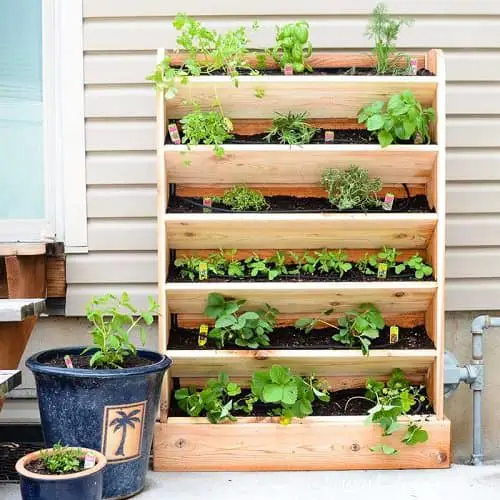
What is Vertical Gardening?
Vertical gardening is a technique that involves growing plants on a vertical surface, such as a wall, trellis, or fence. It is an excellent way to grow plants in small spaces, including balconies, patios, and even indoors. Vertical gardening can be done using a variety of methods, including container gardening, hydroponics, and aeroponics.
Advantages of Vertical Gardening
Vertical gardening has several advantages, including:
- Grow More in Less Space: Utilize vertical gardening to maximize your plant capacity in a limited area. By growing plants vertically on walls, fences, and trellises, you free up valuable ground space for other plants or activities.
- Better Air Circulation: Experience improved air circulation in your garden with vertical gardening. This enhanced airflow helps prevent the spread of diseases and reduces the risk of pest infestations. Furthermore, plants grown vertically are less susceptible to soil-borne diseases.
- Less Pest Pressure: Combat pests effectively through vertical gardening. By raising plants off the ground, you make it more challenging for pests to reach them. Additionally, incorporating companion planting techniques, such as interplanting marigolds to repel aphids, can further deter pests.
- Easy Maintenance: Enjoy the convenience of easy maintenance with vertical gardens. Pruning, watering, and harvesting become effortless when plants are grown vertically. Implementing drip irrigation systems can save you time and water, simplifying your gardening routine.
- Aesthetically Pleasing: Enhance the visual appeal of your space with vertical gardens. Create living walls, green screens, and other imaginative designs that are not only functional but also visually striking. Elevate the aesthetics of your garden while maximizing its productivity.
Types of Vertical Gardens
There are several types of vertical gardens, including:
- Container gardens: This involves growing plants in containers that are hung or stacked vertically.
- Trellis gardens: This involves growing plants on a trellis or lattice structure.
- Wall gardens: This involves growing plants on a wall using a variety of methods, including pockets, frames, and panels.
- Hydroponic gardens: This involves growing plants in a nutrient-rich water solution without soil.
- Aeroponic gardens: This involves growing plants in a mist environment without soil.
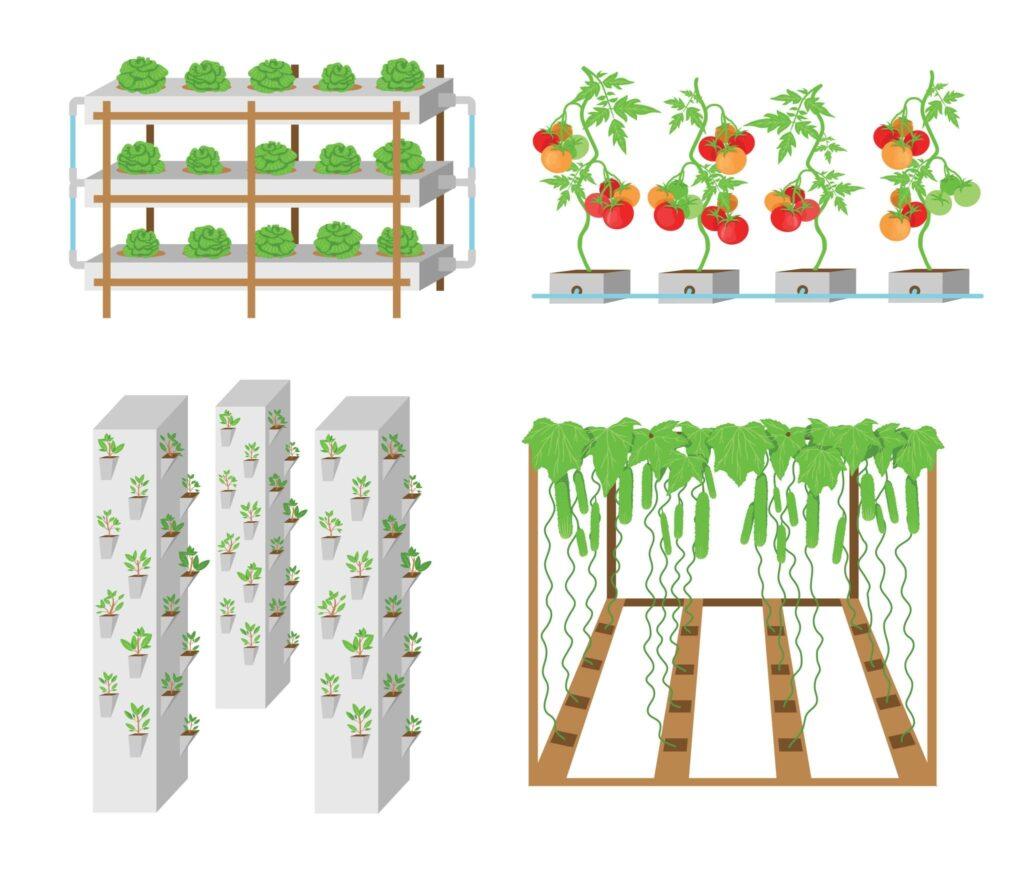
In conclusion, vertical gardening is an excellent way to maximize limited space while adding an aesthetic appeal to any area. It is easy to maintain and harvest, and there are several types of vertical gardens to choose from, depending on your needs and preferences.
Choosing the Right Plants for Vertical Gardening
When it comes to vertical gardening, choosing the right plants is crucial for success. Not all plants are suitable for growing in small spaces, and some may require more maintenance than others. Here are some tips on how to choose the right plants for your vertical garden:
Consider the Growing Conditions
Before selecting plants for your vertical garden, consider the growing conditions. Some plants require full sun, while others prefer partial shade. Consider the amount of sunlight your garden receives and choose plants accordingly. Additionally, some plants require more water than others, so make sure to choose plants that are compatible with your watering schedule.
Choose Plants That Thrive in Small Spaces
Plants that thrive in small spaces are ideal for vertical gardening. Look for plants that don’t require a lot of soil or space, such as herbs like basil, parsley, chives, dill, mint, thyme, oregano, marjoram, lemon balm, and cilantro. These herbs are perfect for adding flavor to your meals and can be grown in small pots or even a vertical garden wall.
Consider the Plant’s Growth Habit
When selecting plants for your vertical garden, consider the plant’s growth habit. Some plants, like tomatoes and cucumbers, are heavy and require sturdy support structures. Other plants, like climbing vines, can grow vertically without additional support. Choose plants that are suitable for the support structure you have in place.
Look for Plants That Are Disease-Resistant
Disease-resistant plants are ideal for vertical gardening, as they require less maintenance and are less likely to succumb to pests and diseases. Look for plants that are resistant to common garden diseases, such as powdery mildew and leaf spot.
Materials and Tools for Vertical Gardening
When it comes to vertical gardening, choosing the right materials and tools is essential to ensure that your garden thrives. Here are some of the materials and tools that I find most useful for vertical gardening:
Materials
- Sturdy Vertical Structures: Choose structures like trellises, arbors, or wall-mounted systems that can support the weight of your plants and withstand environmental conditions.
- Planters and Containers: Opt for containers designed specifically for vertical gardening, such as stackable planters or hanging baskets. These allow for efficient use of space and proper drainage.
- Growing Medium: Use a high-quality soil mix or specialized growing medium that provides adequate nutrients and drainage for your plants.
- Wood: Wood is a popular choice for building vertical gardening structures because it’s easy to work with and readily available. Cedar is a naturally rot-resistant wood that is a good choice for vertical gardens.
- Metal: Metal trellises and supports are sturdy and durable, making them a good choice for heavy plants like tomatoes and cucumbers.
- PVC pipe: PVC pipe is a versatile material that can be used to create a variety of vertical garden structures, such as trellises and supports.
- Fabric pots: Fabric pots are lightweight and breathable, which makes them a good choice for vertical gardens. They’re also reusable and easy to store when not in use.
Tools
- Garden Gloves: Protect your hands while working with soil, plants, and tools.
- Drill: A drill is essential for attaching trellises and supports to walls or other structures.
- Saw: A saw is necessary for cutting wood or PVC pipe to the desired length.
- Level: A level is important for ensuring that your vertical garden is straight and level.
- Hammer: A hammer is useful for nailing or attaching trellises and supports to walls or other structures.
- Pruning shears: Pruning shears are necessary for trimming and shaping plants in your vertical garden.
- Watering Can or Hose: Ensure you have a convenient way to water your vertical garden, either with a watering can for smaller setups or a hose with a spray attachment for larger structures.
- Fertilizer: Choose a suitable fertilizer for your plants’ needs to provide essential nutrients and support their growth.
Remember, the specific materials and tools required may vary depending on your chosen vertical gardening method and the plants you intend to grow. Assess your needs and invest in quality items that will contribute to a thriving vertical garden.
If you’re looking for versatile and space-saving options for your vertical garden, consider the following popular choices:
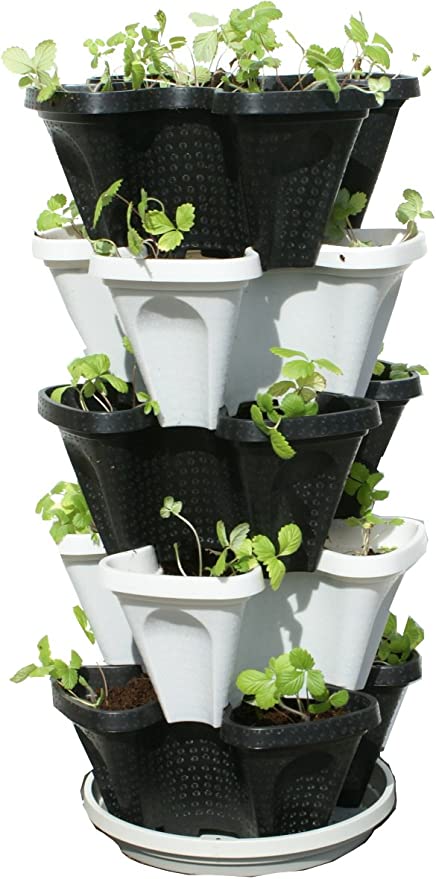
Mr. Stacky
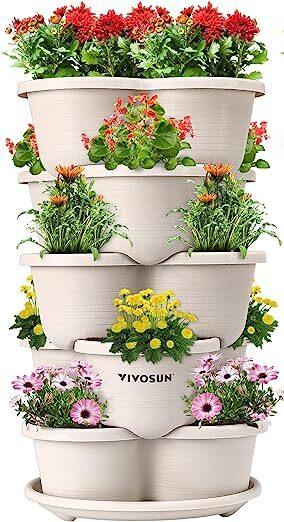
VIVOSUN
Both options provide efficient use of space, easy maintenance, and the opportunity to grow a variety of plants in your vertical garden.
Maintaining Your Vertical Garden
Maintaining a vertical garden can be a bit different from maintaining a traditional garden. Here are a few tips to keep your vertical garden healthy and thriving.
Watering
Watering is crucial for any garden, and a vertical garden is no exception. However, watering a vertical garden can be a bit tricky. It’s important to make sure that water reaches all of the plants, not just the ones at the top. One way to ensure this is to water slowly and deeply, allowing the water to penetrate the soil and reach all of the roots.
Fertilizing
Fertilizing is also important for vertical gardens. Because the soil in a vertical garden is often more compact than in a traditional garden, nutrients can be depleted more quickly. It’s a good idea to fertilize your vertical garden once a month with a balanced fertilizer.
Pruning
Pruning is important for any garden, but it’s especially important for vertical gardens. Plants in a vertical garden can grow quickly and become tangled, which can lead to disease and pests. Regular pruning can help keep your vertical garden healthy and looking its best.
Pest Control
Pests can be a problem in any garden, but they can be especially challenging in a vertical garden. Because the plants are closer together, pests can spread more easily. It’s important to monitor your vertical garden regularly for signs of pests and take action quickly if you notice any problems.
Maintenance
Regular maintenance is key to keeping your vertical garden healthy and looking its best. This includes removing dead or damaged plants, replacing soil as needed, and keeping the area around your vertical garden clean and tidy.
Maintaining a vertical garden may require a bit more effort than maintaining a traditional garden, but the benefits are well worth it. With a little bit of care and attention, your vertical garden can provide you with fresh, healthy produce and a beautiful, space-saving display.
Final Thoughts
Vertical gardening is a highly effective method for maximizing space and enjoying the benefits of gardening in small areas. It offers advantages such as efficient space utilization, increased accessibility, and improved aesthetics.
However, it’s important to be aware of a few limitations. Vertical gardening may restrict plant size, require careful watering and irrigation, and involve some initial investment. Happy Planting!

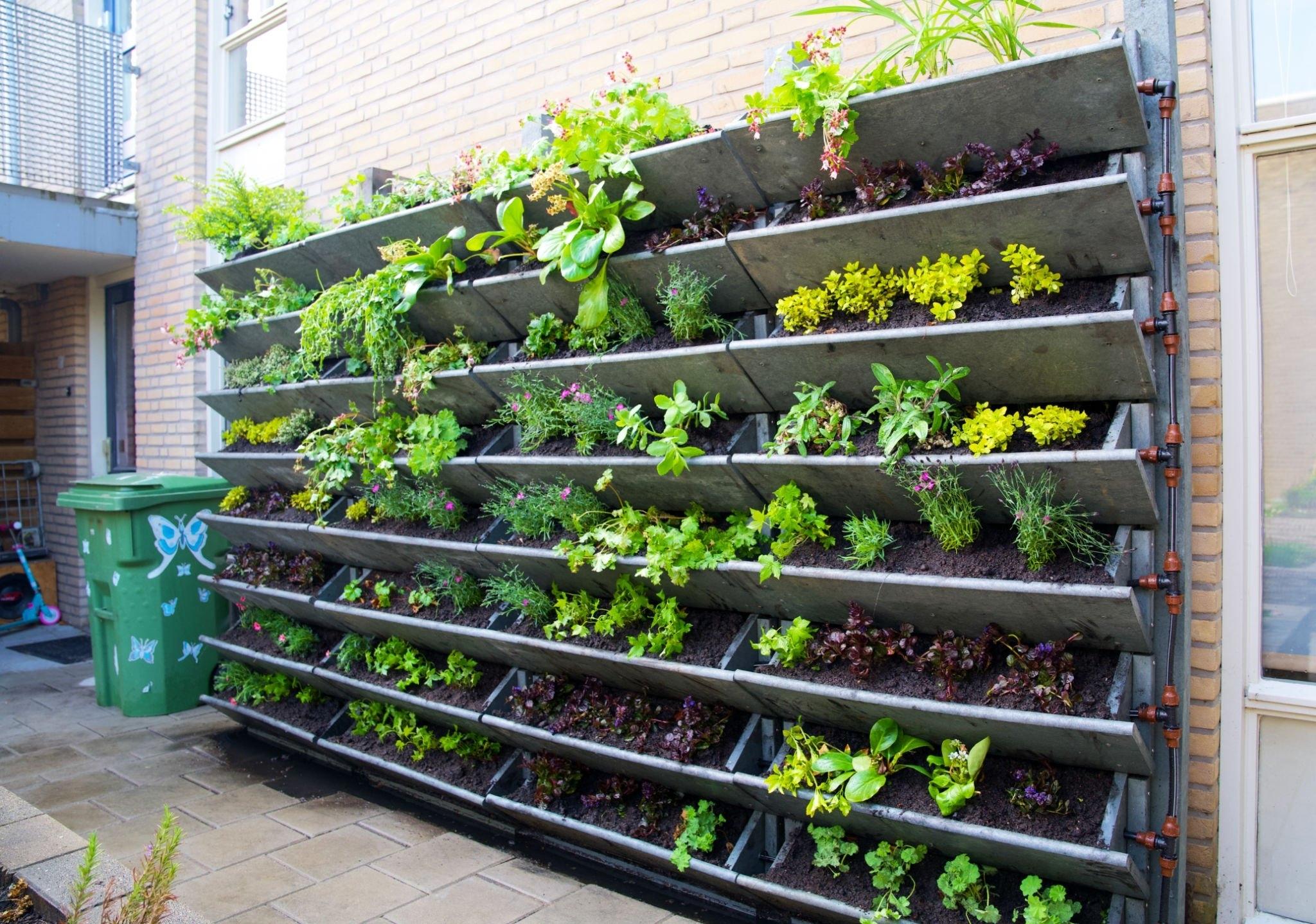

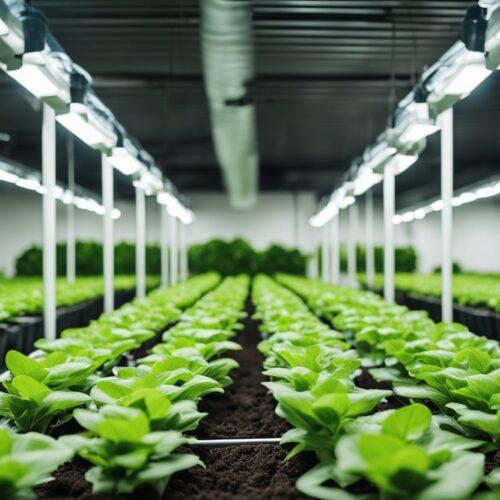

1 comment